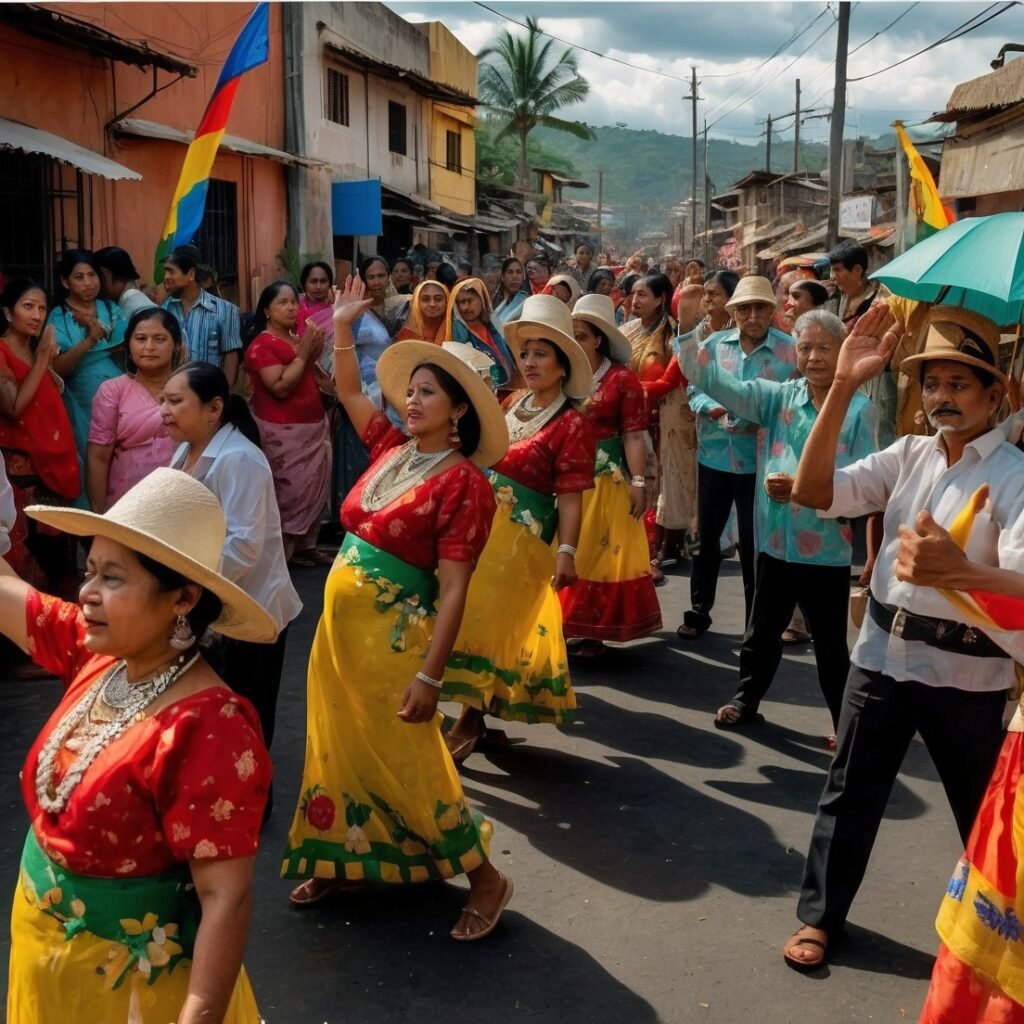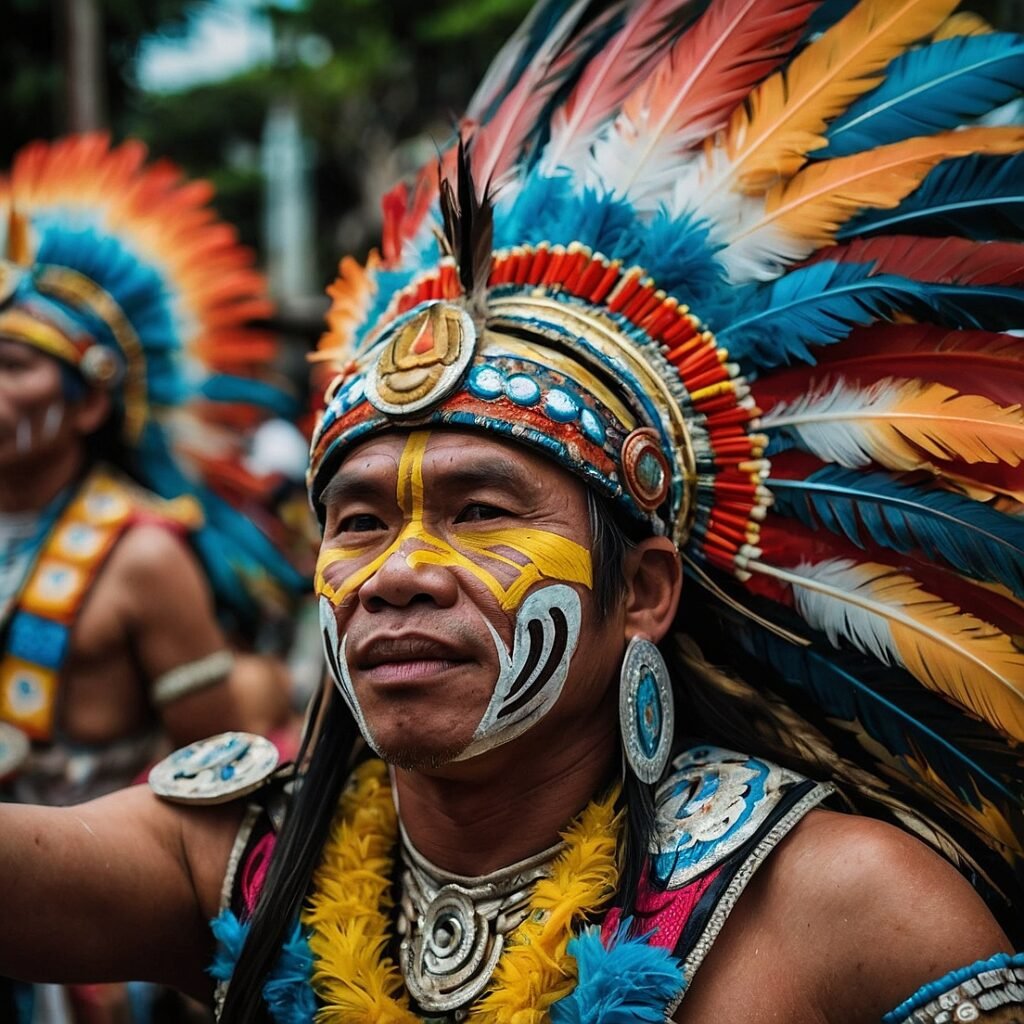Have you ever heard of a place where dancing in the streets might help you have a baby? It sounds like something out of a fairy tale, doesn’t it? Well, in the charming town of Obando, Philippines, this isn’t just a story – it’s a centuries-old tradition that draws thousands of visitors each year. Welcome to the world of the Obando Fertility Rites, a fascinating blend of Catholic faith and indigenous beliefs that has been captivating couples and culture enthusiasts for generations. In this blog post, we’ll take a deep dive into this unique festival, exploring its history, rituals, and the hope it brings to those longing for a child. So, grab a cup of coffee, get comfortable, and let’s embark on this exciting journey together!
The Origins: A Dance Through Time
A Tale of Three Saints
The Obando Fertility Rites, also known as the Obando Fertility Dance Festival, has roots that stretch back to the pre-colonial era of the Philippines. However, the festival as we know it today is a beautiful fusion of ancient Filipino traditions and Catholic influences brought by Spanish colonizers. At the heart of this celebration are three revered saints: Santa Clara, San Pascual Baylon, and Nuestra Señora de Salambao (Our Lady of Salambao).
Each of these saints holds a special place in the hearts of the Obando people and plays a unique role in the festival:
| Saint | Associated With | Feast Day |
|---|---|---|
| Santa Clara | Fertility and good weather | May 19 |
| San Pascual Baylon | Matchmaking and abundance | May 17 |
| Nuestra Señora de Salambao | Fishing and harvest | May 18 |
The festival takes place over three days, with each day dedicated to one of these saints. It’s a vibrant tapestry of faith, hope, and community spirit that has been woven into the fabric of Obando’s culture for centuries.
From Pagan Roots to Catholic Celebration
Before the arrival of Spanish missionaries in the 16th century, the people of Obando practiced indigenous fertility rituals dedicated to their ancestral deities. These rituals often involved dance as a form of prayer and offering. When the Spanish introduced Catholicism, rather than completely eradicating these practices, they were cleverly incorporated into the new religious framework.
This process, known as syncretism, resulted in the unique celebration we see today. The pagan fertility goddess was replaced by Santa Clara, while the dancing rituals were maintained and reframed as acts of devotion to Catholic saints. It’s a fascinating example of how cultures can blend and evolve, creating something entirely new yet deeply rooted in tradition.
The Festival Experience: Dancing for a Miracle
A Colorful Spectacle
Imagine streets filled with swaying couples, their faces a mix of hope, joy, and reverence. The air is thick with the scent of incense and the sound of traditional music. Colorful banners and flowers adorn every corner, creating a feast for the senses. This is the scene that greets visitors to Obando during the fertility festival.
The main event of the festival is the procession and dance. Couples hoping for children, as well as singles looking for a partner, dance through the streets in a specific pattern. They sway from left to right, taking three steps forward and two steps back, all while singing the traditional “Santa Clarang Pinong-pino” (Most Refined Saint Clara). It’s a mesmerizing sight that draws spectators from all over the Philippines and even internationally.
The Dance of Faith
But this isn’t just any dance – it’s a dance of faith, hope, and perseverance. Couples who participate often do so year after year, their determination unwavering. The dance is seen as both a prayer and a test of commitment. After all, dancing for hours under the hot Philippine sun is no easy feat!
Here’s a breakdown of the festival schedule:
| Day | Saint Honored | Main Activities |
|---|---|---|
| May 17 | San Pascual Baylon | Procession, dance for singles seeking partners |
| May 18 | Nuestra Señora de Salambao | Procession, dance for fishermen and farmers |
| May 19 | Santa Clara | Procession, dance for couples seeking children |
While the entire festival is a sight to behold, it’s the final day dedicated to Santa Clara that draws the largest crowds. Couples from all walks of life come together, united in their desire for a child. It’s a powerful reminder of the universal nature of hope and the lengths people will go to for the dream of parenthood.
The Power of Belief: Miracles and Testimonies
Stories of Success
Now, you might be wondering – does this actually work? While there’s no scientific evidence to support the efficacy of the fertility dance, there are countless stories of couples who credit the festival for their successful pregnancies. These testimonies are a crucial part of the festival’s enduring popularity.
One such story is that of Maria and Juan Santos, who had been trying to conceive for five years. After participating in the Obando Fertility Rites for two consecutive years, they welcomed their first child nine months after their second festival. “We don’t know if it was the dance, the prayers, or just the right timing,” Maria says, “but we believe the festival played a part in our miracle.”
Stories like these are not uncommon. The festival’s organizers claim that they receive dozens of letters each year from couples sharing their success stories. While it’s important to approach these claims with a balanced perspective, there’s no denying the power of hope and positive thinking that the festival inspires.
The Placebo Effect and Beyond
From a scientific standpoint, there could be several factors at play. The stress-reducing effects of dance, the psychological boost from participating in a communal ritual, and even the placebo effect could all contribute to improved fertility outcomes for some couples. Moreover, the festival often attracts couples who have been trying to conceive for a while, increasing the statistical likelihood of success stories.
However, the true value of the Obando Fertility Rites goes beyond conception rates. For many couples struggling with infertility, the festival provides a sense of community, hope, and shared experience. It offers a space to openly express their desire for a child in a supportive environment – something that can be incredibly healing in itself.
Beyond Fertility: The Cultural Significance
A Celebration of Heritage
While the fertility aspect of the festival garners the most attention, the Obando Fertility Rites are about much more than just having babies. They’re a vibrant celebration of Filipino culture, history, and community spirit. The festival serves as a living link to the pre-colonial past, preserving ancient traditions and rituals that might otherwise have been lost to time.
For the people of Obando, the festival is a source of immense pride. It puts their small town on the map and brings in visitors from all over the world. Local businesses thrive during the festival period, and the entire community comes together to welcome guests and showcase their hospitality.
A Lesson in Cultural Preservation
The Obando Fertility Rites offer a fascinating case study in cultural preservation. Despite centuries of colonial rule and the modernization of Philippine society, this tradition has not only survived but thrived. It’s a testament to the resilience of cultural practices and the human need for rituals that connect us to our past and to each other.
In recent years, there have been efforts to have the Obando Fertility Rites recognized by UNESCO as an Intangible Cultural Heritage. This would not only bring more attention to the festival but also help ensure its preservation for future generations. It’s a reminder of the importance of protecting and celebrating unique cultural practices in our increasingly globalized world.
The Festival Today: Tradition Meets Modernity
Adapting to Change
Like all living traditions, the Obando Fertility Rites have evolved over time. While the core elements of the festival remain the same, there have been adaptations to accommodate modern realities. For instance, in recent years, there’s been an increasing focus on promoting the festival as a tourist attraction, with efforts to improve infrastructure and visitor facilities.
The festival has also embraced technology. Social media has played a significant role in spreading awareness about the Obando Fertility Rites, with couples sharing their experiences and success stories online. This has led to a surge in international visitors, adding a new dimension to the traditionally local celebration.
Challenges and Controversies
However, this growth and modernization have not been without challenges. There are concerns about over-commercialization and the potential loss of the festival’s spiritual essence. Some traditionalists worry that the influx of tourists might turn a sacred ritual into a mere spectacle.
There’s also been debate about the festival’s focus on fertility. In an age of overpopulation concerns and changing family structures, some question whether a festival centered on child-bearing is still relevant. However, organizers and participants argue that the festival’s deeper messages of hope, faith, and community transcend these concerns.
Participating in the Festival: What You Need to Know
Planning Your Visit
If you’re intrigued by the Obando Fertility Rites and are considering a visit, here are some key things to keep in mind:
- Timing: The festival takes place annually from May 17-19. Plan your trip well in advance, as accommodations in Obando can fill up quickly during this period.
- Location: Obando is located in Bulacan province, about 16 kilometers north of Manila. It’s easily accessible by car or public transportation from the capital.
- Attire: While there’s no strict dress code for visitors, it’s respectful to dress modestly. If you plan to participate in the dance, comfortable shoes are a must!
- Participation: Anyone can join in the dancing, regardless of their faith or background. However, remember that for many, this is a deeply spiritual experience. Be respectful and follow the lead of local participants.
- Weather: May is typically hot and humid in the Philippines. Stay hydrated and protect yourself from the sun.
Respecting Local Customs
While the Obando Fertility Rites welcome visitors, it’s important to remember that this is not just a tourist attraction – it’s a living cultural and religious practice. Here are some etiquette tips:
- Be mindful when taking photographs, especially during religious ceremonies.
- Participate in the festivities with sincerity and respect.
- Learn a few basic Filipino phrases – your efforts will be appreciated by the locals.
- Support the local community by buying from local vendors and staying in local accommodations if possible.
The Future of the Obando Fertility Rites
Preserving Tradition in a Changing World
As we look to the future, the question arises: what lies ahead for the Obando Fertility Rites? In an increasingly secular and globalized world, how will this deeply traditional and localized practice fare?
There are certainly challenges. Younger generations of Filipinos, especially those in urban areas, may feel less connected to these ancient traditions. The rising costs of organizing such a large-scale event and the environmental impact of mass tourism are also concerns.
However, there are also reasons for optimism. The festival has shown remarkable resilience and adaptability over the centuries. Its core messages of hope, faith, and community continue to resonate with people from all walks of life. Moreover, in an age of digital overload, there seems to be a growing appreciation for authentic, tangible cultural experiences.
A Bridge Between Past and Future
Perhaps the key to the festival’s future lies in striking a balance – honoring its ancient roots while embracing positive aspects of modernity. This could involve using technology to document and share the festival’s history and significance, implementing sustainable tourism practices, and finding ways to make the festival’s messages relevant to contemporary issues.
Ultimately, the Obando Fertility Rites are more than just a fertility festival. They’re a celebration of life, hope, and the enduring human spirit. As long as there are people seeking connection, community, and a touch of magic in their lives, there will likely be a place for this unique and beautiful tradition.
The Dance Goes On
As we wrap up our exploration of the Obando Fertility Rites, we’re left with a sense of wonder at the rich tapestry of human culture. This festival, with its blend of ancient rituals and Catholic faith, its dance of hope and perseverance, offers a window into the heart of Filipino culture and the universal human experience.
Whether you’re a couple hoping for a child, a cultural enthusiast, or simply someone fascinated by the diversity of human traditions, the Obando Fertility Rites have something to offer. They remind us of the power of community, the strength found in shared hopes and dreams, and the beautiful ways in which cultures can evolve and adapt while staying true to their roots.
So, the next time you find yourself in the Philippines in mid-May, why not take a detour to Obando? Who knows – you might find yourself swept up in the dance, part of a tradition that has been bringing joy, hope, and maybe even a little miracle to people for centuries. After all, in Obando, they say that faith can move mountains – or in this case, make them dance!
Disclaimer: This article is based on historical information and cultural accounts available up to 2021. While we strive for accuracy, cultural practices can evolve, and individual experiences may vary. This content is for informational purposes only and should not be considered medical advice. Please consult with healthcare professionals for fertility-related concerns. If you notice any inaccuracies, please report them so we can correct them promptly.




